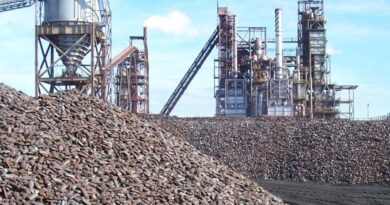How much green steel costs?
In short, clean hydrogen production at scale will require billions of dollars of investment in renewable power generation.
But it remains a key part of the EU’s ambition to reach net-zero emissions by 2050. Its REPowerEU plan has set a target to substantially increase the use of renewable hydrogen by 2030.
Europe’s biggest steel-maker, ArcelorMittal, told the Financial Times that decarbonizing its operations on the continent in line with EU targets could cost up to $40 billion.
China has also pledged to achieve carbon neutrality by 2060, which would require reducing emissions from its steel plants which are responsible for a third of its total CO2 pollution. China currently produces half the world’s steel.
The path to net zero
The world’s richest G7 economies can achieve carbon neutrality if governments implement the right policies in the next five years, according to the International Energy Agency (IEA). In a new report, the IEA says G7 economies need to recognize the use of interim technologies that substantially reduce emissions even if they aren’t considered zero emissions.
“This decade is key to set the tracks to climate neutrality. Especially in sectors where emissions are high but hard-to-abate like steel and cement, we have to fundamentally shift production methods,” said Robert Habeck, Germany’s Federal Minister for Economic Affairs and Climate Action.
One global initiative working to decarbonize industrial sectors like steel is the World Economic Forum’s First Movers Coalition. At the Forum’s Annual Meeting in Davos this year, the Coalition announced it had expanded, with 55 companies and nine countries now committed to purchasing a proportion of the industrial materials and transport they need from suppliers using near-zero or zero-carbon solutions.




